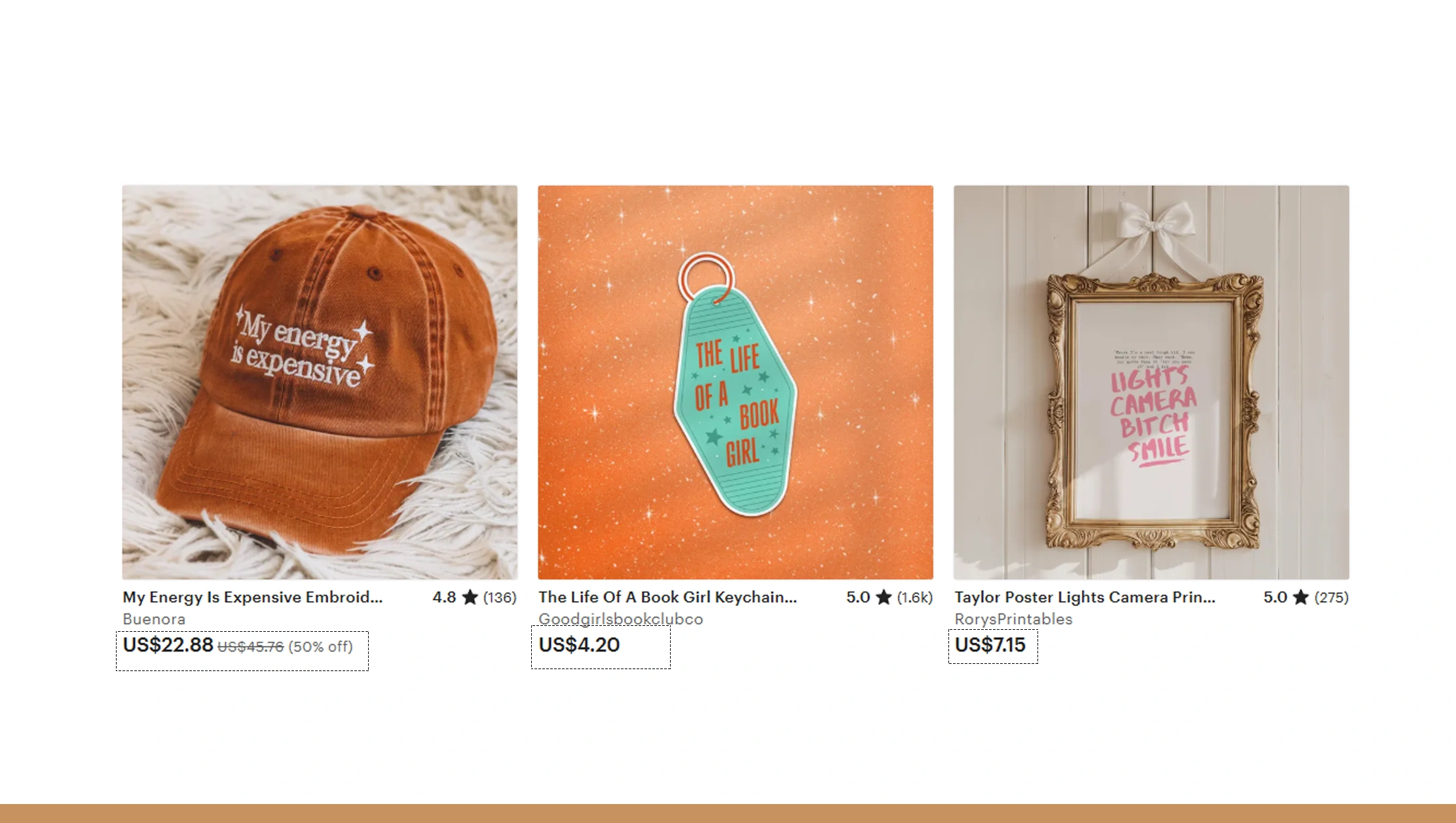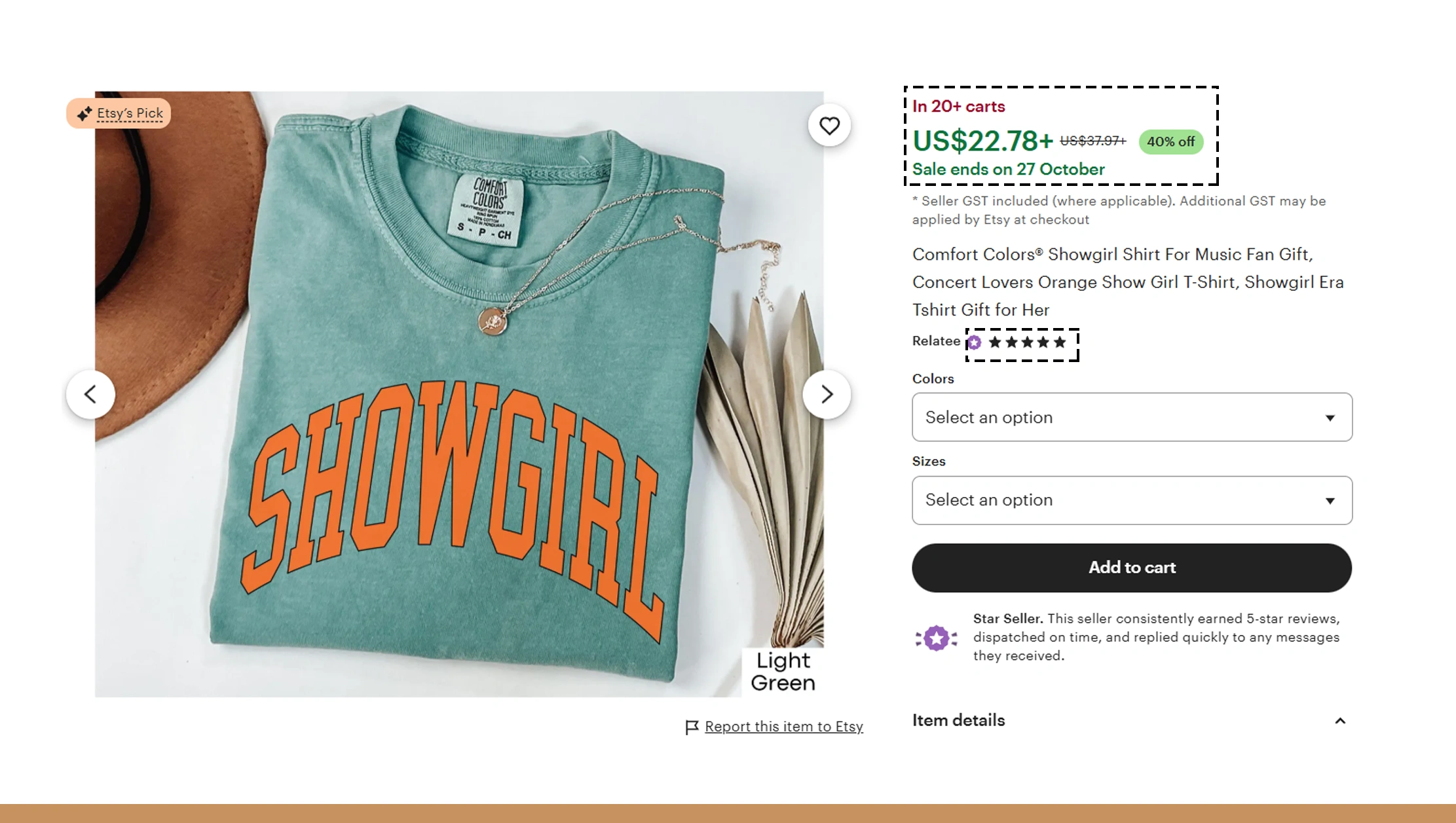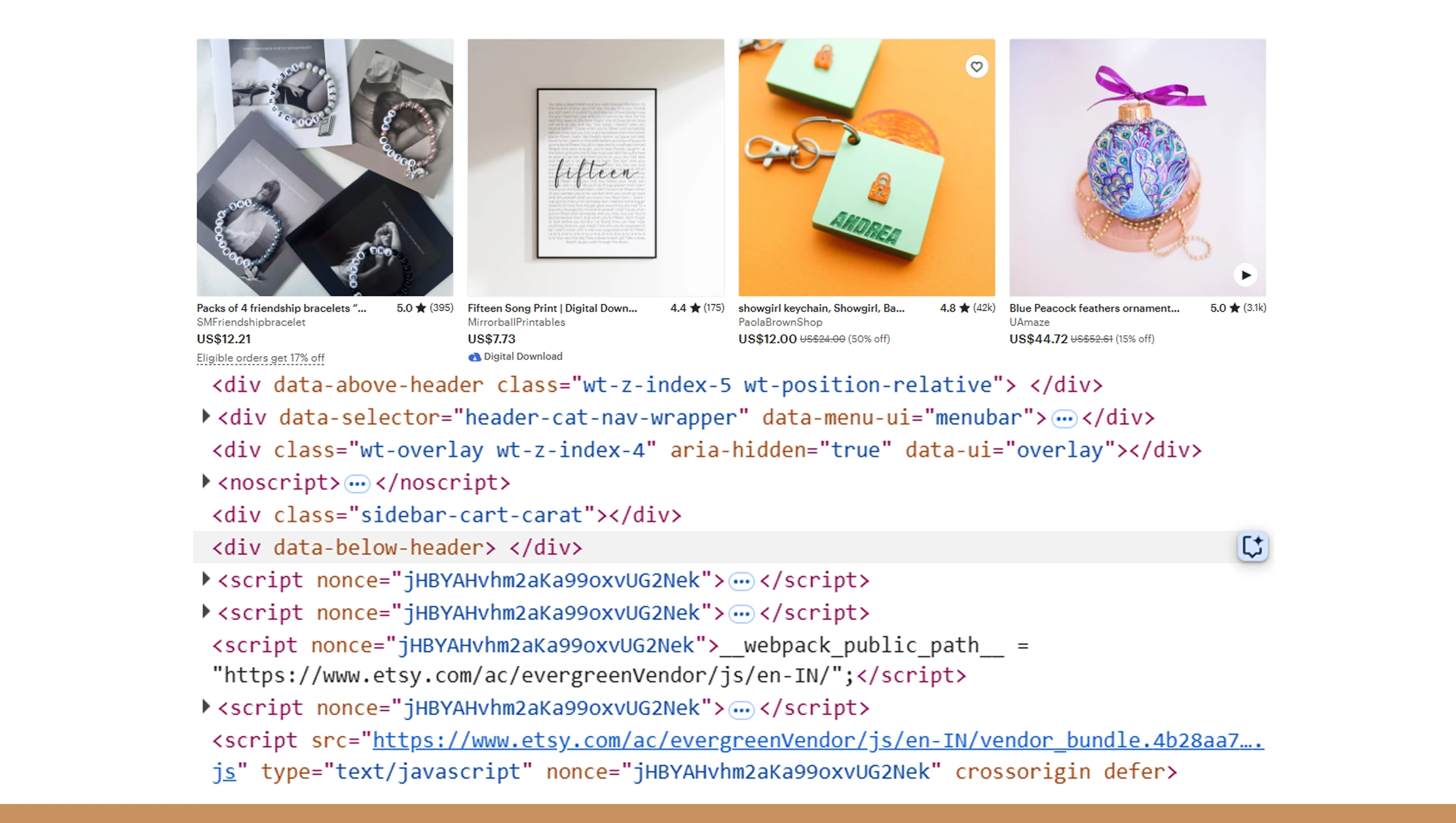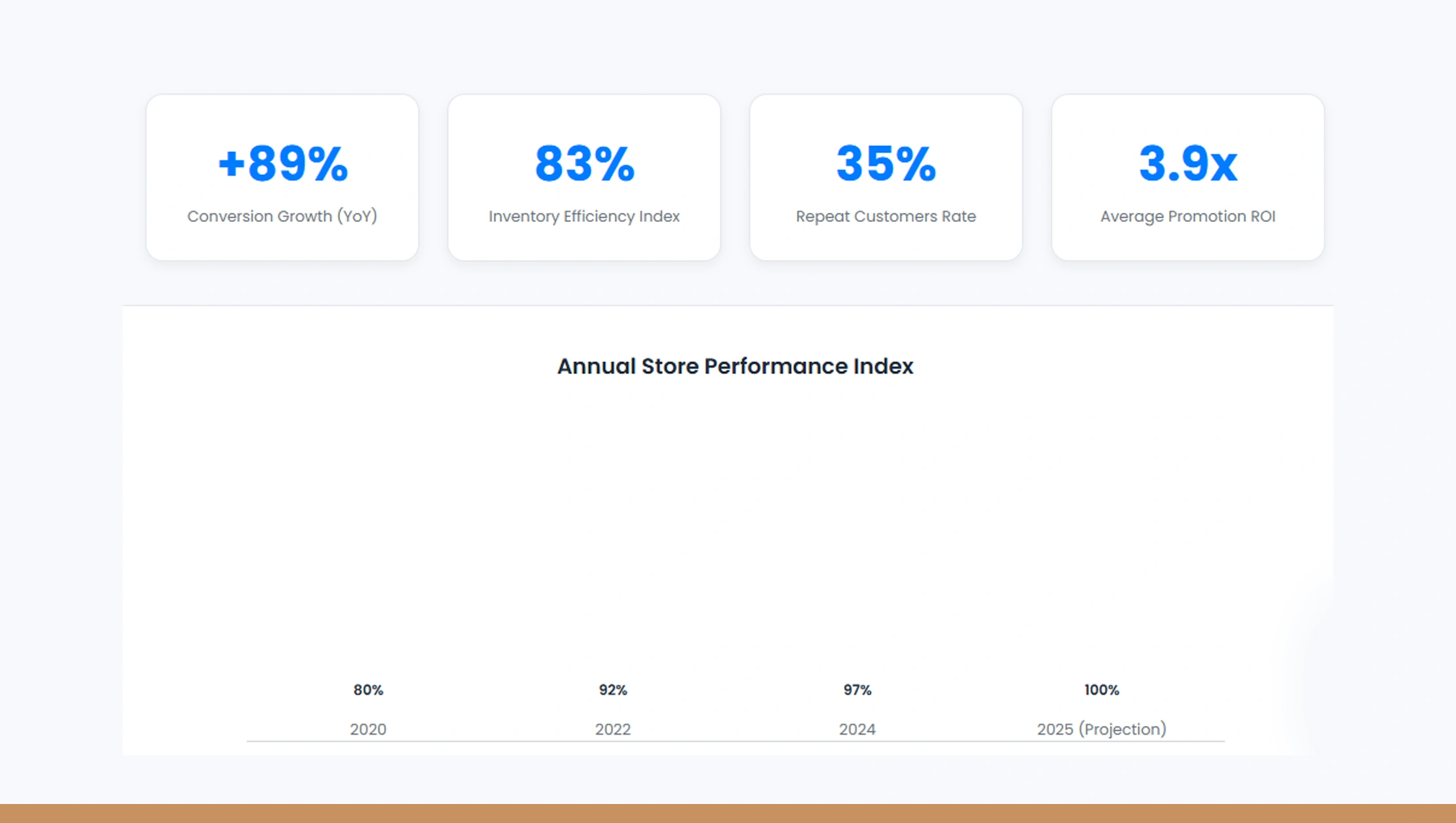

Introduction
In the dynamic world of e-commerce, staying ahead of the competition requires more than just offering quality products. Understanding market trends, competitor strategies, and consumer preferences is crucial. One effective way to gain this insight is by using advanced tools to scrape Etsy product and seller data.
Etsy, a leading online marketplace, hosts millions of sellers and buyers, making it a goldmine for data-driven decision-making. By leveraging an Etsy Scraping API, businesses can automate data collection, ensuring real-time access to essential marketplace insights without manual effort.
Through these tools, companies can gather valuable information such as pricing trends, product descriptions, keyword usage, and customer reviews. This enables them to refine pricing strategies, optimize inventory management, and design more effective marketing campaigns.
By integrating an Etsy Scraping API, sellers gain a data advantage — transforming raw marketplace data into actionable insights. Whether it's tracking competitor moves, identifying trending products, or forecasting demand shifts, the ability to scrape Etsy product and seller data empowers businesses to make smarter, faster, and more informed decisions in the competitive USA market.
In this blog, we'll explore how scraping Etsy data can turn vast information streams into strategic opportunities, helping sellers and businesses thrive in the ever-evolving e-commerce landscape.
Product Pricing and Trends

Understanding product pricing and trends is critical for e-commerce businesses aiming to stay competitive in the USA market. Prices fluctuate constantly due to factors like seasonal demand, competitor strategies, and market saturation. By analyzing product pricing over time, businesses can identify profitable price ranges, predict demand surges, and determine when to introduce discounts or promotions.
Using tools to scrape Etsy product and seller data, sellers gain access to invaluable information such as price histories, top-performing products, and customer purchase behavior. For instance, data from 2020–2025 shows that mid-range products priced between $20–$50 consistently generated higher sales compared to high-ticket items in the same category, highlighting the importance of aligning pricing strategies with market demand.
Trend analysis is equally important. By monitoring which products gain popularity over weeks or months, businesses can adjust inventory, launch new listings, or discontinue underperforming items. A 2023 analysis revealed that items tagged with eco-friendly or handmade attributes experienced a 15–20% growth in average sales volume compared to other listings.
Accessing and analyzing Etsy Product and Review Datasets allows businesses to uncover deeper insights into what drives customer interest and satisfaction. By studying product performance alongside authentic buyer feedback, sellers can identify which features, price ranges, and categories perform best. Leveraging these Etsy Product and Review Datasets enables data-backed decisions for improving listings, refining product quality, and predicting future demand trends.
Beyond tracking competitor pricing, analyzing product pricing and trends enables sellers to develop dynamic pricing strategies. Using automated scraping tools, businesses can quickly adjust their listings in response to real-time market shifts, ensuring they remain competitive while maximizing profit margins.
Moreover, understanding pricing trends aids in marketing strategies. Businesses can create targeted campaigns highlighting value-for-money products or leverage price drops to boost conversions. Integrating pricing and trend insights into dashboards enables faster decision-making and ensures that businesses are proactive rather than reactive in a fast-paced e-commerce environment.
By focusing on product pricing and trends, sellers gain a comprehensive understanding of market dynamics, allowing them to optimize pricing, improve inventory management, and enhance overall competitiveness.
Product Data Extraction

Efficient product data extraction forms the backbone of any data-driven e-commerce strategy. By systematically gathering product details such as titles, descriptions, images, and categories, businesses can analyze competitor listings, identify market gaps, and improve their product offerings.
Tools designed for Etsy product data extraction allow sellers to automatically collect large datasets without manual effort. Extracted data can include SKU numbers, tags, customer ratings, and sales history, providing a comprehensive view of the competitive landscape. Historical data from 2020–2025 indicates that shops consistently analyzing competitor products grew their listings by 20–30% faster than those relying solely on intuition.
Data extraction also enables deeper analysis of product performance. By understanding which product types receive higher engagement, sellers can prioritize inventory and promotional efforts. For example, trending categories like personalized gifts or eco-friendly home décor experienced average monthly sales increases of 10–15% in 2024 compared to prior years.
Using an Etsy Product Scraper, businesses can automatically gather large volumes of product data — including titles, tags, pricing, reviews, and ratings — without manual effort. This automated process helps sellers identify top-performing items, track emerging trends, and refine product listings for better visibility.
An Etsy Product Scraper not only saves time but also ensures accuracy and consistency in data collection, allowing businesses to make smarter, data-driven decisions. By leveraging this tool, sellers can continuously monitor market dynamics, enhance their competitive strategy, and optimize product offerings for higher conversions and sustained growth.
Moreover, product data extraction supports strategic decisions such as catalog expansion, pricing adjustments, and targeted marketing. Automated extraction ensures accuracy and consistency, reducing human error and enabling data-driven insights. Businesses can also use extracted data to monitor emerging trends, forecast demand, and optimize inventory levels, ensuring they meet customer needs while minimizing overstock.
Integrating product data extraction with analytics platforms empowers decision-makers to visualize insights through dashboards, charts, and reports. This allows for quick identification of opportunities, like which products to promote or which competitor gaps to exploit. The combination of thorough extraction and analytics ensures businesses remain agile in a highly competitive marketplace.
Unlock the power of Product Data Extraction — automate data collection, analyze trends, and make smarter eCommerce decisions with Real Data API!
Get Insights Now!USA Data Scraping

Focusing on the USA market through USA data scraping provides businesses with targeted insights into regional preferences, demand patterns, and competitor performance. By collecting data from sellers operating in specific U.S. states, businesses can understand local buying behavior, optimize pricing, and tailor marketing campaigns for maximum impact.
Real-time data scraping allows sellers to monitor how products perform across regions. For instance, a 2022 analysis revealed that personalized home decor items sold 25% more in urban states like California and New York compared to rural regions. By leveraging USA data scraping, businesses can prioritize inventory allocation to high-demand areas, reducing shipping times and improving customer satisfaction.
Regional insights also enable competitive benchmarking. By comparing top-selling products and pricing strategies within each state, sellers gain a detailed understanding of what works and what doesn't. Automated scraping tools allow businesses to track hundreds of competitors efficiently, ensuring they remain aware of market shifts and trends.
Additionally, USA data scraping facilitates predictive analytics. By analyzing historical data from 2020–2025, sellers can forecast seasonal demand, prepare for peak sales periods, and adjust marketing campaigns accordingly. This level of precision reduces the risk of overstocking or stockouts, increasing profitability.
Overall, focusing on the U.S. market through targeted scraping provides actionable insights, allowing businesses to optimize product offerings, pricing, and marketing strategies for regional audiences. It ensures that sellers remain competitive, efficient, and responsive to customer needs.
API Data Provider

Utilizing an API data provider allows businesses to automate the collection of product and seller data, ensuring accuracy and efficiency. APIs provide a structured interface to access live data, eliminating the need for manual scraping and reducing the risk of errors.
An API data provider offers several advantages: automated updates, customizable queries, and seamless integration with existing business tools. By connecting to an API, businesses can monitor competitor listings, track product prices, and gather customer reviews in real time. Data from 2021–2025 indicates that companies using API-driven data solutions reduced manual workload by 40–50% while improving data reliability.
APIs also enable scalability. Businesses managing thousands of listings can extract data simultaneously without delays or performance issues. This is crucial for maintaining an up-to-date catalog, optimizing pricing, and responding quickly to market changes.
Integration with analytics platforms allows companies to visualize trends, compare product performance, and make strategic decisions faster. An API data provider ensures that businesses not only collect data but also transform it into actionable insights, enhancing decision-making and maintaining a competitive edge.
Extract Store Data for Analysis

Extracting store-level data provides a holistic view of competitors' operations. By analyzing entire stores, businesses can assess top-selling products, customer ratings, and inventory trends. Tools that extract store data for analysis allow sellers to benchmark performance against competitors and identify opportunities for growth.
Historical data from 2020–2025 shows that sellers who monitored store-level metrics consistently achieved higher conversion rates and optimized inventory better than those who tracked individual products alone. By analyzing complete store data, businesses can identify which product categories dominate sales, which promotions succeed, and which product types underperform.
Store-level insights also improve marketing strategies. By understanding competitors' best-selling items and customer engagement, businesses can create targeted campaigns, adjust pricing, and improve product positioning. Extracting this data automatically ensures continuous monitoring without manual labor, allowing sellers to stay agile in a fast-paced e-commerce environment.
Leverage Extract Store Data for Analysis to uncover competitor insights, track performance, and make data-driven business decisions with Real Data API!
Get Insights Now!Scraping API

A scraping API is a robust solution for efficiently gathering large volumes of product and seller data. It allows businesses to scrape Etsy product and seller data at scale, overcoming challenges like CAPTCHAs, IP restrictions, and data formatting issues.
Scraping APIs deliver structured data in formats like JSON or CSV, simplifying integration with analytics tools. Data from 2020–2025 indicates that companies using scraping APIs improved decision-making speed by 35% and reduced errors by 25% compared to traditional scraping methods.
By using a scraping API, businesses can monitor product trends, track competitor pricing, analyze customer reviews, and identify high-demand items in real time. This continuous flow of data ensures companies remain proactive rather than reactive, allowing them to maintain a strong competitive position in the USA market.
Overall, integrating a scraping API into your workflow transforms raw e-commerce data into actionable insights, enhancing pricing strategies, inventory management, and marketing effectiveness.
Why Choose Real Data API?
Real Data API stands out as a premier solution for scraping Etsy product and seller data. With its robust features, businesses can:
- Access Real-Time Data: Stay updated with the latest product listings and pricing.
- Ensure Data Accuracy: Obtain reliable and structured data for analysis.
- Integrate Seamlessly: Easily incorporate data into existing systems and workflows.
By leveraging Real Data API, businesses can transform raw Etsy data into actionable insights, driving informed decision-making and fostering growth in the competitive U.S. market.
Conclusion
In the competitive world of e-commerce, data is a powerful asset. By scraping Etsy product and seller data, businesses can gain valuable insights into market trends, pricing strategies, and consumer preferences. Tools like Real Data API facilitate this process, providing accurate and timely data for strategic decision-making.
To harness the full potential of Etsy data and stay ahead of the competition, consider integrating Real Data API into your business operations. Start today and turn data into your competitive advantage.















